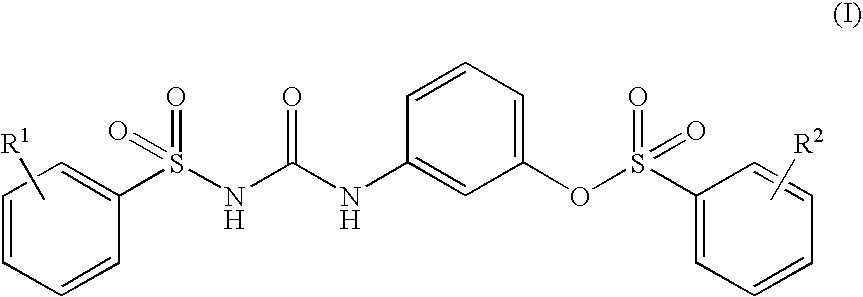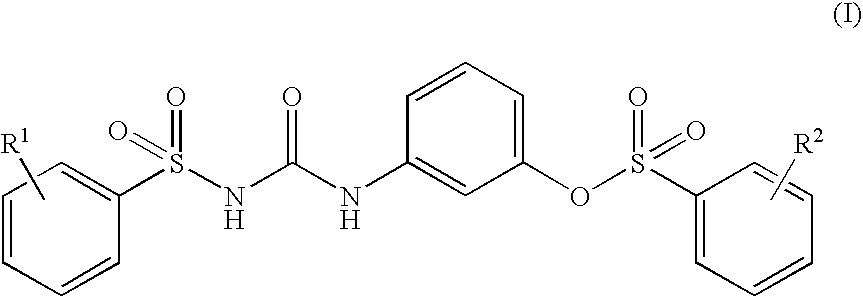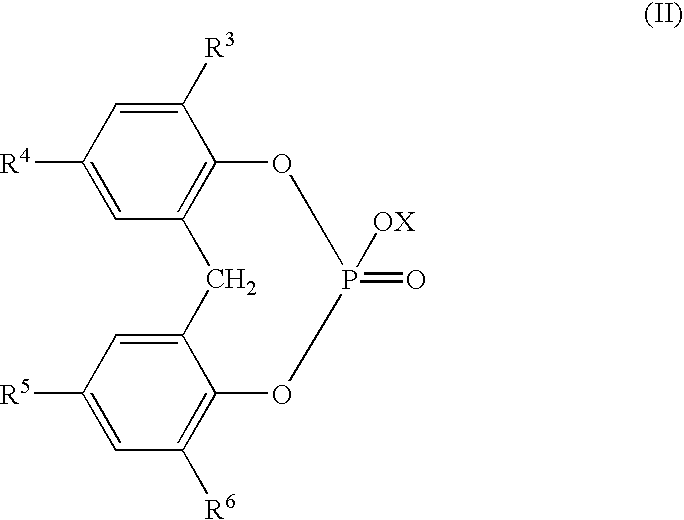Thermal recording materials
a technology of thermal recording materials and recording materials, applied in thermography, photosensitive materials, instruments, etc., can solve the problems of inability to achieve sufficient light resistance in storage, low thermal response, and insufficient thermal recording materials
- Summary
- Abstract
- Description
- Claims
- Application Information
AI Technical Summary
Benefits of technology
Problems solved by technology
Method used
Image
Examples
preparation example 1
Preparation of Dispersions A to J
[0095]
[0096] 200 Grams of 3-(N-ethyl-N-tolyl)amino-6-methyl-7-anilinofluorane was dispersed in a mixture of 200 g of a 10 wt % sulfone-group-modified polyvinyl alcohol aqueous solution with 600 g of water, and the resultant mixture was pulverized with a beads-applied mill until the mixture had an average particle diameter of 1 .mu.m, to give Dispersion A.
[0097]
[0098] 200 Grams of 3-dibutylamino-6-methyl-7-anilinofluorane was dispersed in a mixture of 200 g of a 10 wt % sulfone-group-modified polyvinyl alcohol aqueous solution with 600 g of water, and the resultant mixture was pulverized with a beads-applied mill until the mixture had an average particle diameter of 1 .mu.m, to give Dispersion B.
[0099]
[0100] 200 Grams of 3-(p-toluenesulfonyl)-N'-(3-p-toluenesulfonyloxyphenyl-)urea was dispersed in a mixture of 200 g of a 10 wt % sulfone-group-modified polyvinyl alcohol aqueous solution with 600 g of water, and the resultant mixture was pulverized w...
example 1
[0115] (1) Preparation of Thermal Recording Ayer Coating Solution
[0116] Some of Dispersions obtained in Preparation Example 1 and other materials were mixed in amounts shown below, water was added to the mixture to form an aqueous solution having a thermal recording layer coating concentration of 15% by weight, and the resultant mixture was fully stirred to give a thermal recording layer coating solution.
1 Dispersion A 30 parts Dispersion C 70 parts Dispersion D 7 parts Dispersion J 50 parts 40 wt % Zinc stearate dispersion 10 parts 10 wt % Completely saponified polyvinyl 40 parts alcohol (PVA) aqueous solution
[0117] (2) Preparation of Thermal Recording Material Substrate
[0118] An undercoat layer coating solution having the following composition was applied onto wood-free paper having a basis weight of 40 g / m.sup.2 so as to form a coating having a coating weight of 10 g / m.sup.2, and the applied coating solution was dried to obtain a thermal recording material substrate.
2 Calcined ka...
example 2
[0121] A thermal recording material was obtained in the same manner as in Example 1 except that Dispersion G in an amount shown below was added to the thermal recording layer coating solution in Example 1.
3 Dispersion G 1 part
PUM
| Property | Measurement | Unit |
|---|---|---|
| temperature | aaaaa | aaaaa |
| heat resistance | aaaaa | aaaaa |
| melting point | aaaaa | aaaaa |
Abstract
Description
Claims
Application Information
 Login to View More
Login to View More - R&D
- Intellectual Property
- Life Sciences
- Materials
- Tech Scout
- Unparalleled Data Quality
- Higher Quality Content
- 60% Fewer Hallucinations
Browse by: Latest US Patents, China's latest patents, Technical Efficacy Thesaurus, Application Domain, Technology Topic, Popular Technical Reports.
© 2025 PatSnap. All rights reserved.Legal|Privacy policy|Modern Slavery Act Transparency Statement|Sitemap|About US| Contact US: help@patsnap.com



